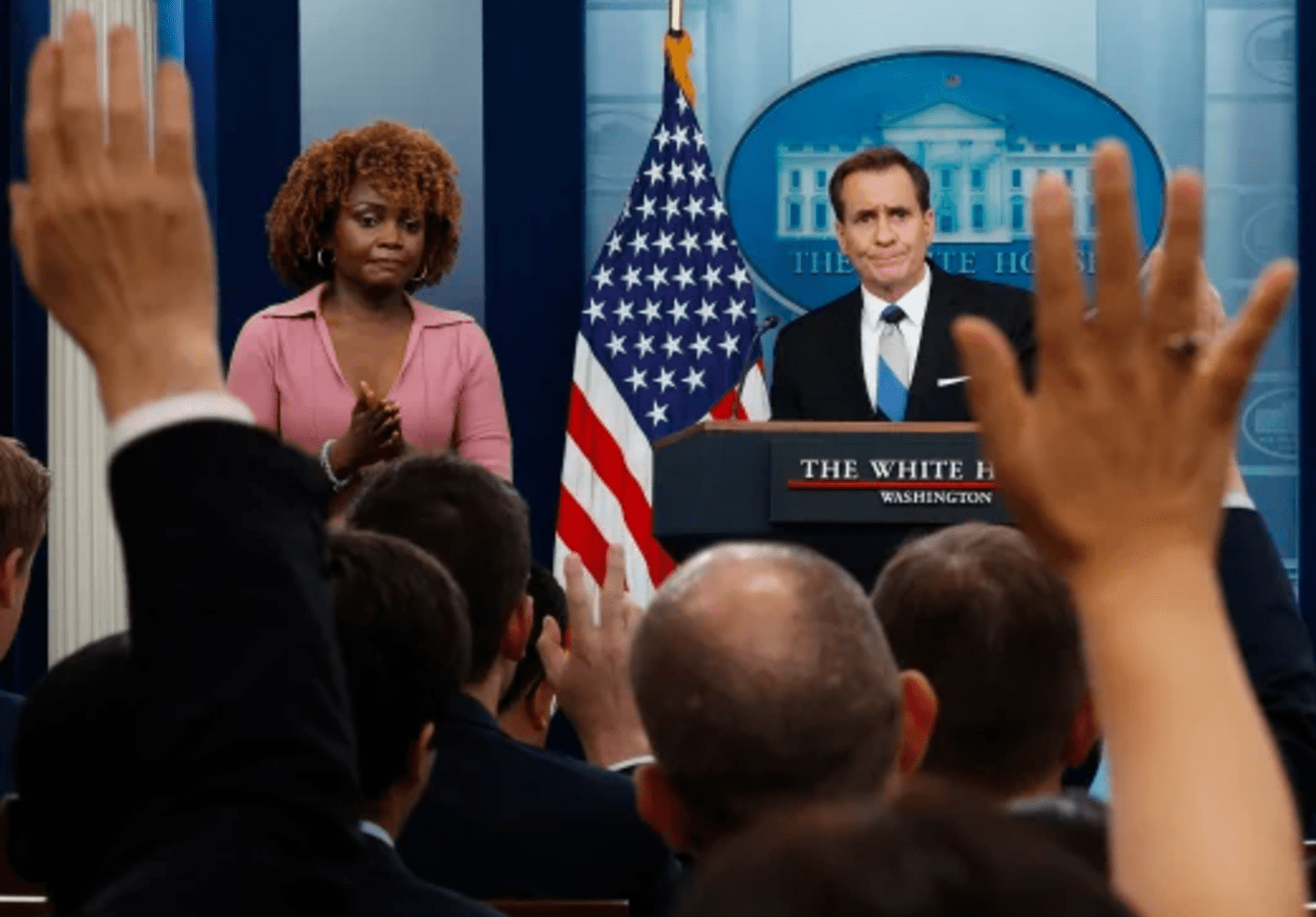
White House Clarifies Stance on Israel’s Rafah Action.White House’s Stance on Israel’s Actions
The White House recently addressed Israel’s actions. This includes the Rafah strike and the ground assault. The Biden administration stated these actions do not cross President Biden’s ‘red line’. The statement came amidst increasing tensions. Both actions have drawn international attention. Concerns about civilian casualties are widespread. White House Clarifies Stance on Israel’s Rafah Action
Clarification on the ‘Red Line’
President Biden’s ‘red line’ has been a topic of debate. The administration clarified it. They said the ‘red line’ is focused on specific scenarios. It pertains to the use of certain military tactics. The White House emphasized that Biden’s stance is firm. His ‘red line’ includes the prohibition of indiscriminate violence.

Context of the Rafah Strike
The Rafah strike happened recently. It targeted a significant location in Gaza. Israel justified it as a military necessity. Officials launched the strike claiming it would disrupt militant activities, but the civilian impact has come under scrutiny. Humanitarian organizations expressed concerns. They reported potential violations of international law.
Details of the Ground Assault
The ground assault followed the Rafah strike. Israeli troops entered Gaza. This marked a significant escalation. The operation aimed to dismantle militant infrastructure. Israel stated it was crucial for national security. The White House monitored these developments closely.
International Reactions
International reactions have been mixed. Some countries condemned Israel’s actions. They called for immediate cessation. Others supported Israel’s right to self-defense. The United Nations weighed in as well. They urged restraint from all parties.
White House’s Response
The White House response was measured. Officials reiterated support for Israel’s security. This dual approach aimed to balance both interests. The administration communicated with Israeli leaders. They stressed the importance of minimizing civilian harm.
President Biden’s Position
President Biden’s position is clear. He supports Israel’s right to defend itself. However, he insists on adherence to international law. His administration has been vocal about this balance. The ‘red line’ reflects these principles. Biden’s approach aims to prevent escalation.
Humanitarian Concerns
Humanitarian concerns are significant. The Rafah strike and ground assault have caused displacement. Many civilians are affected. The White House acknowledged these issues. They pledged to monitor the situation. Aid organizations are on high alert.
Diplomatic Efforts
Diplomatic efforts are ongoing. United States is also involved in this matter They are working with international partners. The goal is to de-escalate the conflict. He has been in contact with Middle Eastern leaders.
Future Implications
The future implications are uncertain. The situation remains volatile. The White House is prepared for various scenarios. They have contingency plans in place. Continuous monitoring is essential. The administration is committed to a peaceful outcome.
Media Coverage
Media coverage of the events is extensive. News outlets around the world are reporting. They highlight different aspects. Some focus on the military strategy. Others emphasize humanitarian impacts. The White House’s statements sparked widespread coverage, dividing public opinion.
Conclusion
The White House has made its stance clear. Israel’s Rafah strike and ground assault do not cross Biden’s ‘red line’. This position is based on specific criteria. The administration emphasizes the importance of minimizing civilian harm. They support Israel’s right to self-defense within legal boundaries. Diplomatic efforts and humanitarian aid remain priorities. The situation continues to evolve.
Diverse Perspectives
The media coverage of Israel’s actions is extensive. Various outlets are reporting on the events. Each outlet presents a unique perspective. This diversity in reporting is crucial. It helps the public understand different viewpoints.
Focus on Military Strategy
Some news outlets focus on military strategy. They analyze the tactics used by Israel. Reports detail the objectives of the Rafah strike. The ground assault is also examined. Experts are often cited. They provide insights into the military operations. These reports aim to explain Israel’s actions.
Highlighting Humanitarian Impacts
Other media outlets highlight humanitarian impacts. They report on civilian casualties. Displacement is a significant concern. Humanitarian organizations are frequently quoted. Their reports emphasize the suffering of civilians. These stories aim to humanize the conflict.
International Reactions
Coverage also includes international reactions. Many countries have expressed their views. Some condemn Israel’s actions. Others defend Israel’s right to self-defense. The United Nations’ stance is widely reported. These reactions provide a global context.
White House Statements
The White House’s response is a key focus. Media outlets report on the administration’s statements. They analyze President Biden’s ‘red line’.Policymakers and analysts frequently discuss the balance between security and humanitarian concerns. These reports help clarify the U.S. position.
Public Opinion
Public opinion is shaped by media coverage. Different reports influence how people perceive the conflict. Social media plays a role in this. People share and discuss news articles. Public opinion can vary widely.
Ongoing Updates
The situation is dynamic. Media coverage is continuous. New developments are reported promptly. Journalists are on the ground. They provide real-time updates. This ensures the public stays informed.
Conclusion
Media coverage of Israel’s Rafah strike and ground assault is comprehensive. It includes diverse perspectives. Reports focus on military strategy, humanitarian impacts, and international reactions. Analysts closely scrutinize the White House’s stance, which influences public opinion.







